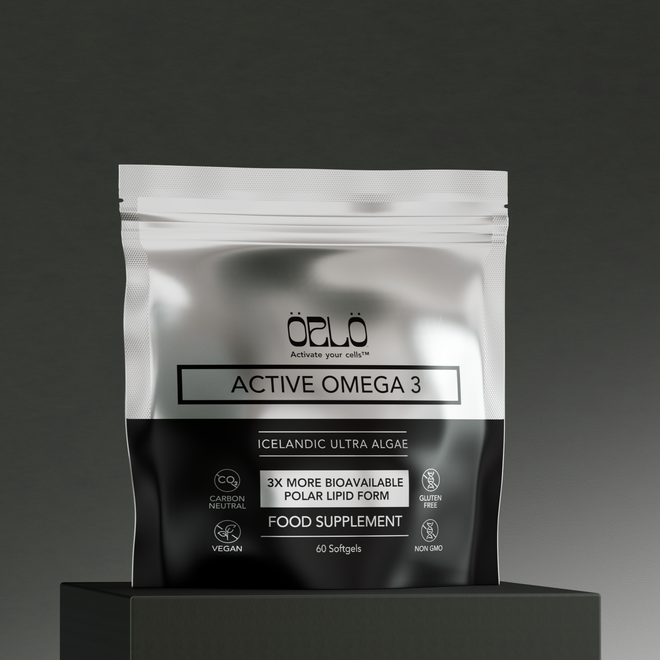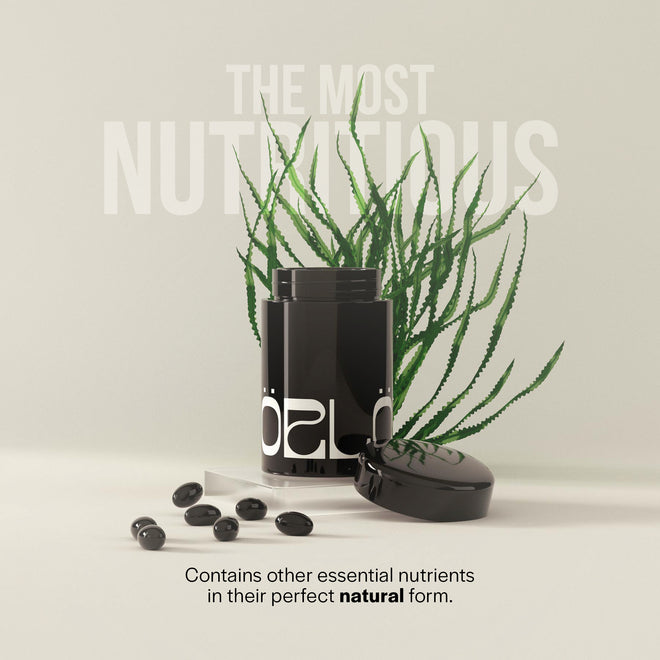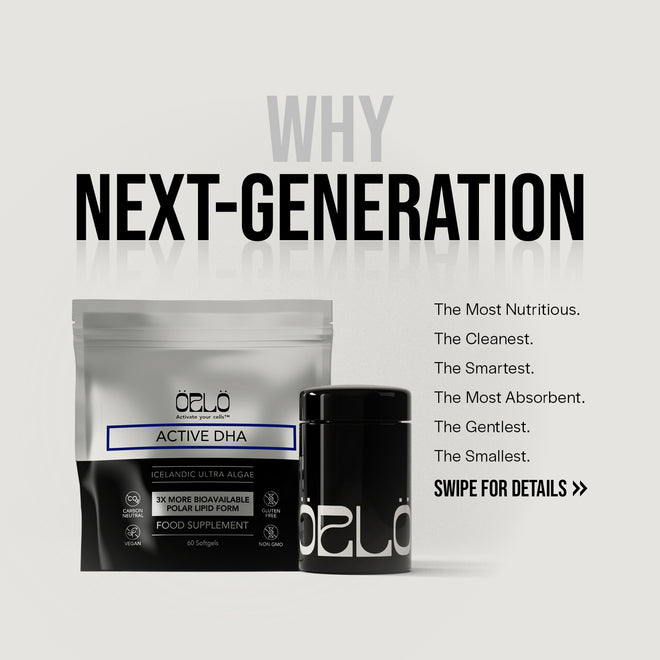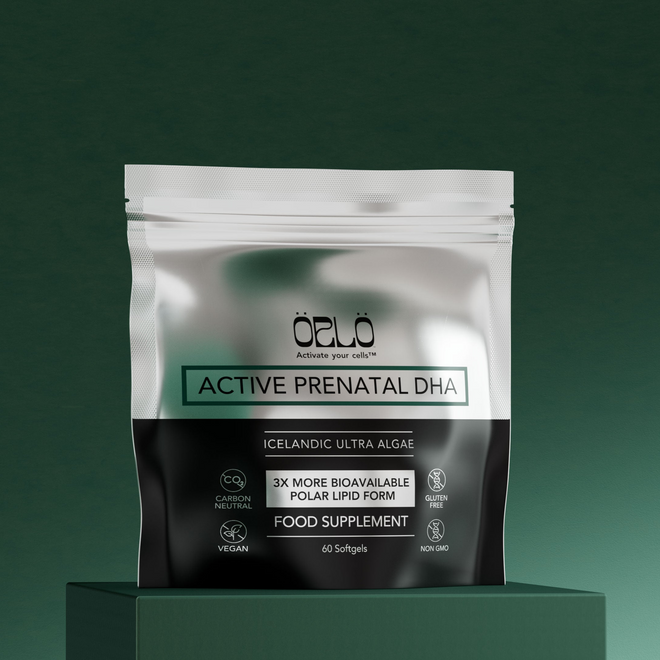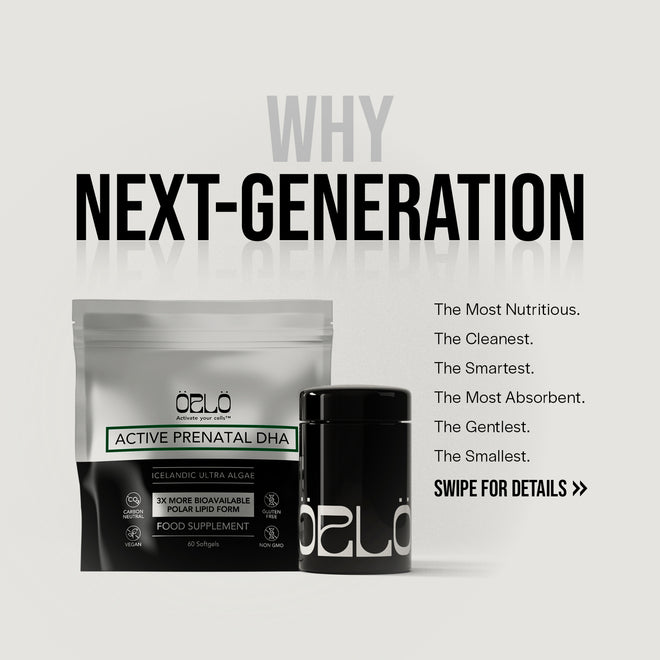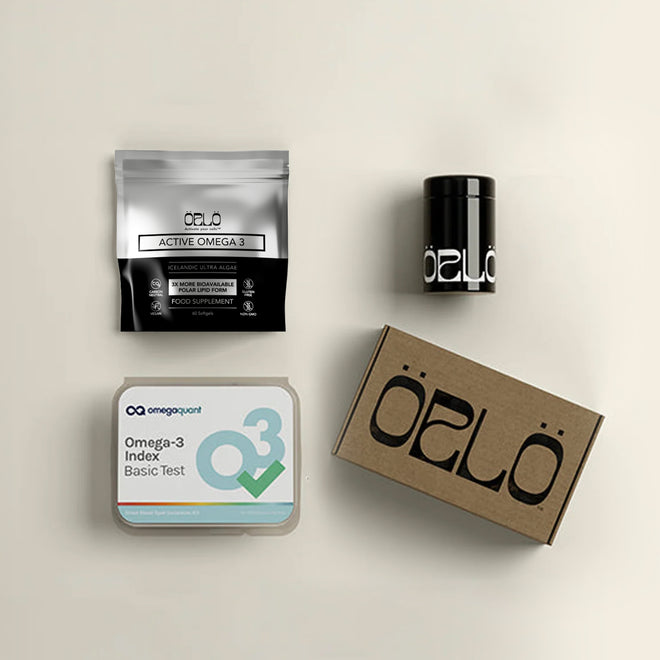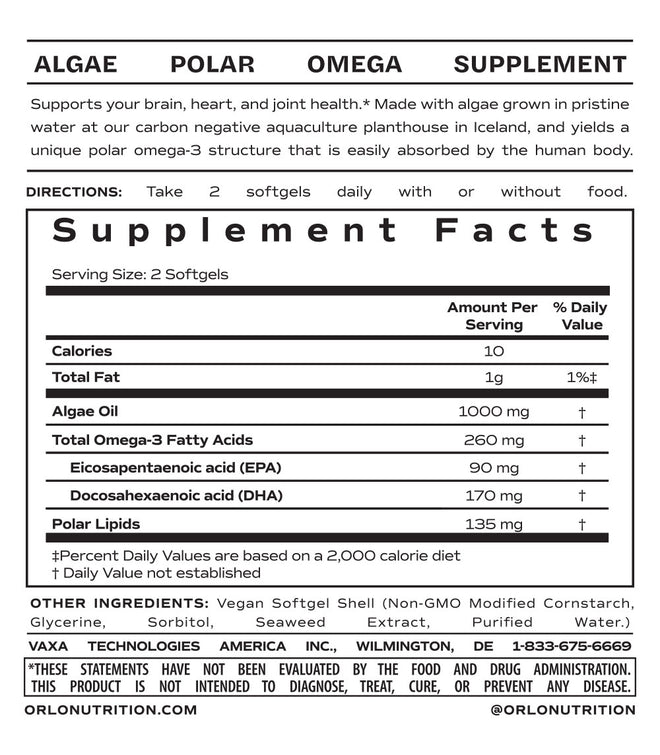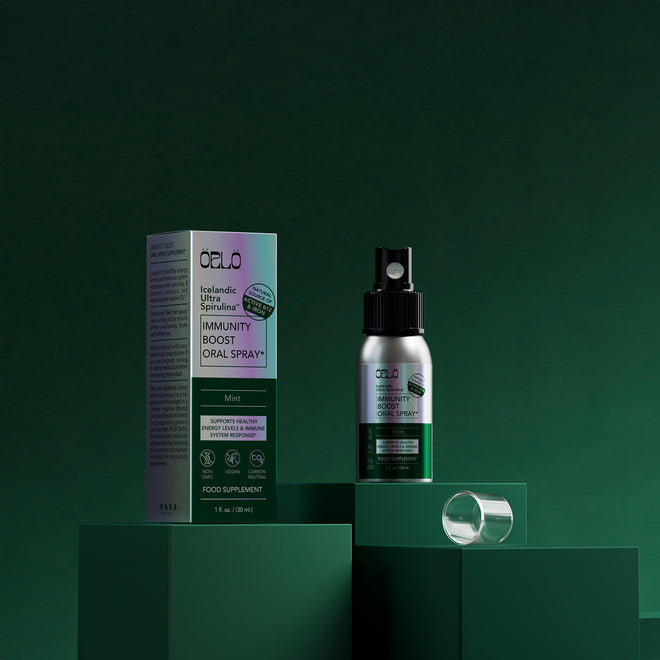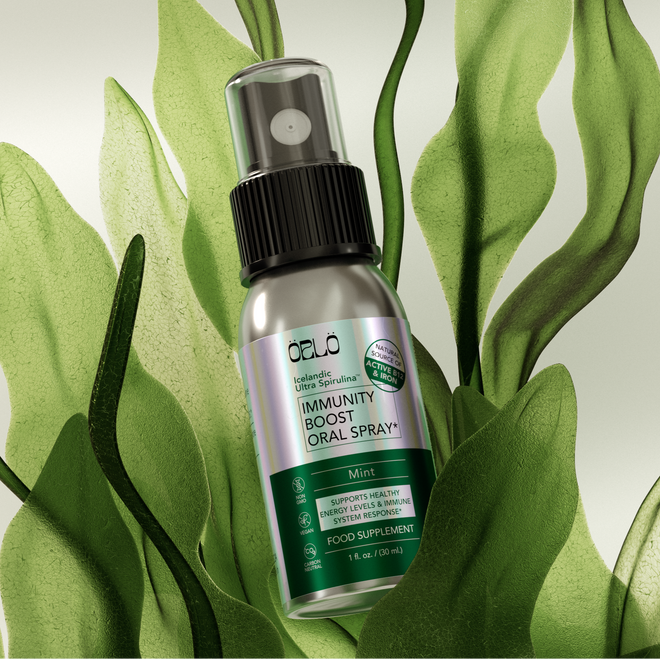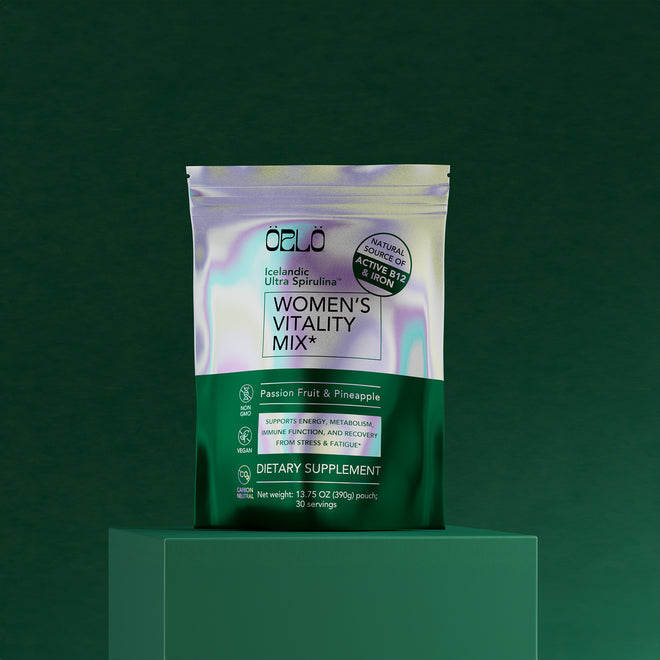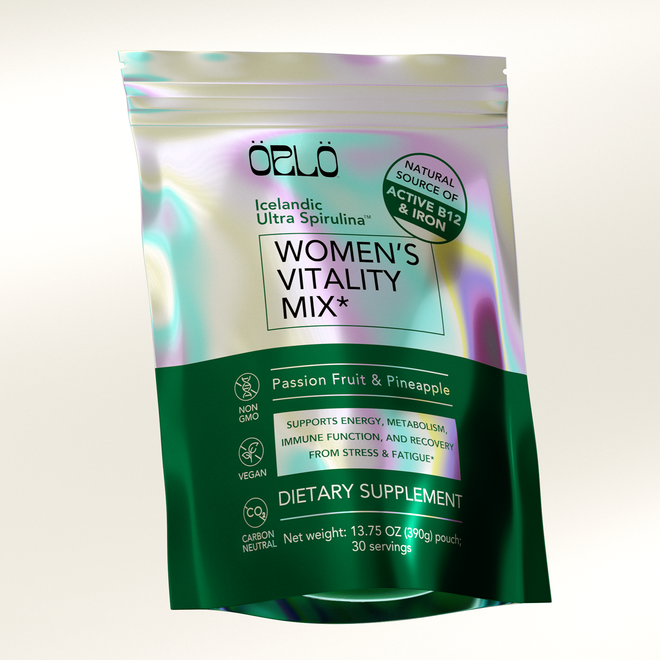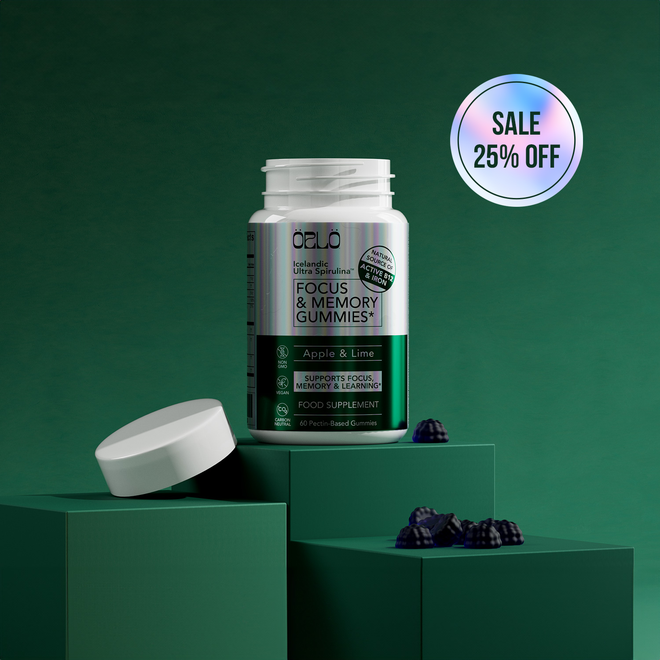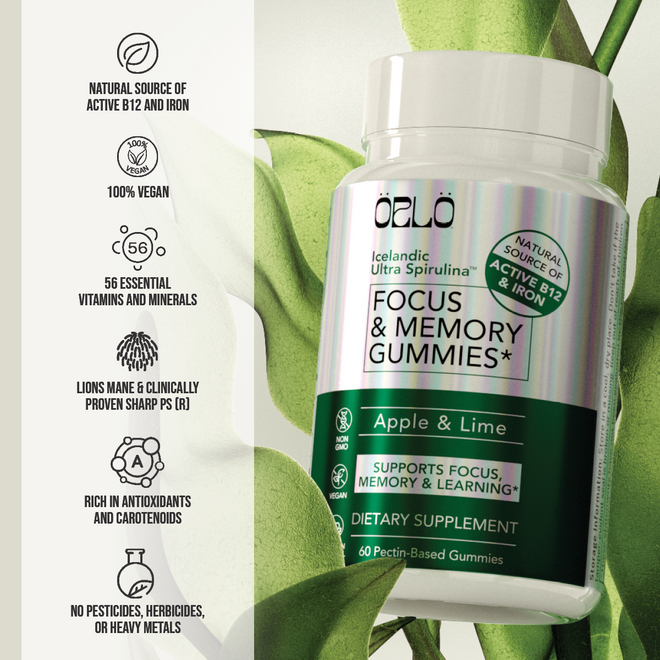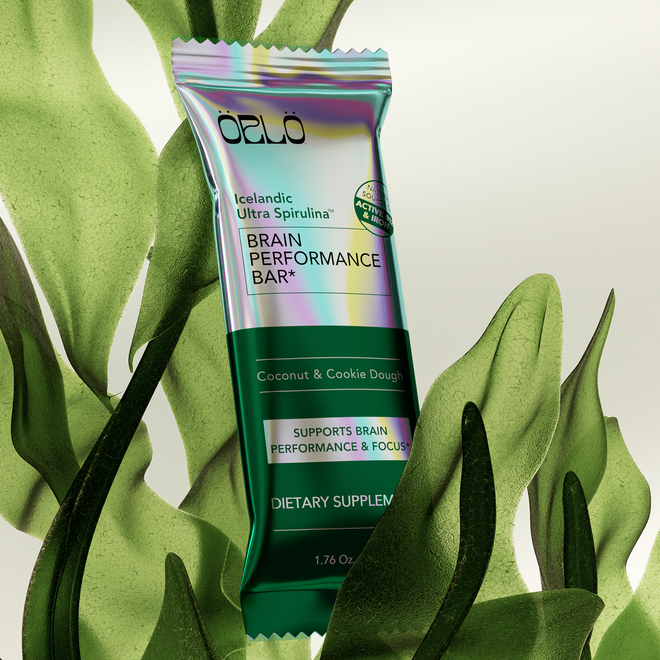25% Off - use code: HOLIDAYS
Adding Variety To Your Plant-Based Diet With Algae-Based Nutrition With Courtney Boyd Myers, CEO/CMO Of AKUA
Watch the episode here
The great thing about nature is how it just keeps on giving. Be it from land or sea, our sources for great nutrition are nothing short of abundant. Taking us deep into the ocean, Corinna Bellizzi is with Courtney Boyd Myers (AKA CBM), the CEO and CMO of AKUA—makers of the world’s first kelp burgers. Courtney dives into our coastal waters and discusses how she discovered the power of algae for human nutrition. Who says farming and being plant-based are only for dry land? Tune in as you learn about ocean farming and the regenerative nature of kelp products. Spice up your diet and switch your veggie burgers to kelp. Join this episode to learn more!
Key takeaways from this episode:
- Benefits of seaweed / algae for nutrition
- How kelp burgers differ from your standard veggie burger
- The regenerative nature of kelp and other types of algae
- Why kelp and algae products can be a unique nutrition source for plant-based nutrition
Guest Social Links:
Website: https://akua.co
Instagram: https://www.instagram.com/lifeakua/
TikTok: https://www.tiktok.com/@lifeakua
LinkedIn: https://www.linkedin.com/in/courtneyboydmyers/
---
Adding Variety To Plant-Based With Algae-Based Nutrition With Courtney Boyd Myers, CEO/CMO Of AKUA
We are going to dive deep into our coastal waters as we discuss the power of algae for human nutrition. I'm thrilled to be joined by another algae entrepreneur and sustainability advocate, Courtney Boyd Myers. Courtney is the CEO and CMO of Akua, makers of one of the world's first kelp burgers.
Prior to launching Akua, she helped build the Summit Community, a global network of founders, creatives, and innovators. She began her career as a journalist at Forbes Magazine and The Next Web, and has been recognized as one of Fast Company's most creative people in business. She serves as an advisor to GreenWave as well. Courtney, welcome to the show.
Thank you so much for having me. Thanks so much for all the flexibility and scheduling. I’m glad we could do this.
I know how the world can be. As I was sharing before we got on this show, I'm here on the Central Coast of California, home of one of the largest kelp forests in the world, and also home to some recent weather events that have led atmospheric rivers to pound our shores. We had a bit of flooding and a bit of construction to deal with that as well because that's the present reality. Being flexible is part of what it means to deliver nutrition and health without compromise.
Flexibility and going with the flow.
I wanted to start our conversation centered on one thing. What led you to the present moment? You got your start in this world of work as a writer, a sustainability advocate, and someone who had quite a bit of success. What made you choose to do this and shift?
First, I left journalism and writing to pursue working inside startups. I was a plug-in CMO for early-stage tech companies. I enjoyed working with entrepreneurs and being a part of the creation of stories that I used to write about. I was working in technology and startups. I love tech. I miss it sometimes, but I wanted to reorient my career to some way that was addressing climate change. I felt like I would regret fast-forward 30 years if I was looking back, and I had done nothing.
I started looking at climate solutions. That's when a friend took me to a kelp farm. It was one of those magic moments where so many things came together. I had come from this world of consulting and working for multiple companies and always having my hands in lots of different cookie jars, metaphorically speaking. I thought, "This is something I could wake up and do every day for the rest of my life."
That's an important moment to reach. Many people never get to that state. It’s knowing that certainty that this is something you could do forever.
It’s my love of the oceans. It's my love of feeding people healthy food. It’s my love of seaweed and every box that ticks around the climate.
Tell me about the first tour of that farm. Did it happen to be the Atlantic seaweed company?
No. It was with an amazing nonprofit that we are now partnered with called GreenWave. One of my best friends helped start the nonprofit. He worked for an amazing guy named Bren Smith. Bren is a real leader in the industry. GreenWave is one of the most funded nonprofits. Patagonia is a big backer. They have grown so much over the years. I was sitting on a boat with Bren. He was talking about all of the reasons he was in this industry, and so much of it had to do with that connection with farmers and the ocean, and helping more farmers get into ocean farming to be able to make a living off of it. I thought, "If you're going to grow all this kelp, who's going to get everyone to eat it? That's what I'll do."
Let's talk about kelp because as I positioned it at the start of this show, kelp is a macroalgae. It is one of the species of algae. Algae itself is responsible for over half of the oxygen that we breathe, for example. It sequesters carbon. It also produces phytonutrients and then some macronutrients as well. If somebody is to go ahead and consider kelp as food, help us understand what that can look like.
Kelp has always been food. Seaweeds in general have been a part of our culinary history for thousands of years. It dropped off the map sometime in the 1800s in Europe. A lot of our Native Americans that were in this country first were eating lots of seaweed. Coastal foraging is what they call it. Somewhere along the line around the Industrial Revolution, we stopped eating seaweeds. In Asia, Korea, Japan, and China, eating seaweed is the way that Americans eat bread.
Nori is one of 10,000 different kinds of edible seaweeds. Seaweed is a macroalgae. Like land plants, it grows through photosynthesis, which is why it has all these climate change benefits that we can get. From a food perspective, it's chock full of vitamins and minerals and has a texture somewhere between linguini and kale when you cook it. At the end of the day, it’s a sea vegetable.
Seaweed, from a food perspective, is chock-full of vitamins and minerals.
It does also have the benefits of sea salt that’s present within it and also iodine. They’re natural things that we need in our daily diet. I've had the chance to try a few different seaweed burgers at various stages, some of which were pre-market test set supply shows in the algae enthusiast community like Algae Biomass Summit and things like that. They're trying to showcase the creative uses of algae in foods. I've also seen things from algae protein isolates and things along those lines that may later end up in our foods. What kind of seaweed are you using in the Akua burger? I believe you're also launching a crab cake if you haven't already.
The crab cake launched at the beginning of June 2022. In all of our products, we use ocean-farmed kelp. We use specifically sugar and skinny kelp. Those are the two most abundantly farmed on the New England Seaboard. We also use kelp fiber in the crab cakes that are from a cool company called Oceanium. That is it. We have agar in our burger as well, which is also technically algae. We're excited about using other seaweeds. At the moment, the sustainability supply chain is important for us. Kelp is dominating that in the United States.
What can people expect from a mouthfeel perspective? Let's say that they're ready to give it a try but they're skeptical, "Between linguini and something else, that doesn't sound like a burger to me." Talk to us about that.
The description of in between a linguini and kale is to describe cooked kelp. When you eat our kelp burger, you are eating cooked kelp that has been cut up into tiny little pieces inside of a mixture that has mushrooms, extra-virgin olive oil, quinoa, and black beans. When you're biting into a kelp burger, you're going to get that sensation of eating all those little ingredients. It's very soft. It's not like a traditional beef burger or dry veggie burger that's dry or hard. It is a chewy bite. We use a textured pea protein, which Beyond Meat uses as well. If you use too much of it, it can be spongy, but soft and chewy is how I would probably describe it.
That would also provide some protein from the pea.
Kelp is on a by-cup basis. It’s not very impressive when you talk about macronutrients like calories, fiber, sugar, or protein. It's all about the micronutrients. When we're looking at the protein, which a lot of consumers want to see in a burger or anything plant-based in the meat-alt category, they need to have protein in it. We use peas. We have 12 grams of protein per patty.
That's impressive. As far as the overall calorie construct, I imagine it's less than some of the other veggie burgers out there, considering that kelp is so low in caloric content. How would it compare to let's say a standard veggie burger that somebody might be used to from that perspective?
Calorie-wise, we're looking at 250 calories per kelp burger. It depends on which plant-based burger you're eating. That's in line with a Praeger's, Hilary's, or Boca Burger, and probably a little less than a Beyond or an Impossible but close.
As far as added salt, my understanding at least with most of the kelp burgers out there is that you don't need to add salt because the kelp brings some of that to it. What is a salt source? Is there an additional?
We use a tiny bit of salt in our seasoning mix but you're correct. Kelp growing in seawater has a lot of natural salt content. We wash off the kelp to diminish that over-salty taste. When a lot of people hear kelp burger, they think they're going to eat something that tastes very briny and oceany. That's not the case for ours. We wanted to create a product that would be loved by seafood lovers and non-seafood lovers alike.

Hats off to you there because some of the earlier prototypes that I've tried from a variety of companies have been quite briny. I don't tend to add salt to my dishes. I tend to feel like they're salty plenty without adding things. I'm perhaps a little bit more sensitive than some.
Did you know that every person has a different reaction to salt? How much they like salt in their dishes is apparently related to how much salt is in their body.
That makes complete sense. I have gone through some pretty intense workout stretches over the years, where I was training for marathons and running 40 miles a week or more. We get to a point where I would taste my sweat in the shower because it comes down from my hair. I would be like, "I don't taste any salt anymore. I need to consume more." You sweat so much of it out. I would find myself craving salty foods but I would also take electrolytes to supplement in addition. I still found that even at those moments, I didn't tend to like adding salt to foods very much. I do prefer to use sea salt at home. I have a sea salt cracker. I prefer it to be gritty and noticeable as opposed to what you get out of a shaker personally.
I'm with you on that one.
I add salt when I add salt but typically, it's not very much.
Who are these other companies that you're trying kelp burgers with? I don't know many. There's The Dutch Weed Burger over in Amsterdam. That arguably was the first to market that I saw but their first ingredient is soy. We were the first to market with a kelp burger where kelp is the first ingredient.
You're correct on that. I went to Natural Products Expo East in September. Atlantic Sea Farms was tasting in a booth that they managed there. They were bringing it to market through a branded product that was regionally launched in the North Atlantic area. I felt like it was super salty. I'm more sensitive and therefore, was not the target demographic for this. I was like, "Is that salt all coming from the seaweed?" They said yes.
Have you tried our burger?
I have not yet.
What a crime.
After this episode, I'm going to have to go and seek some out. I did try to find it in my local shop and didn't see it there. You will have to give me a list.
In San Francisco, we sell almost 60 boxes a week at Rainbow Grocery.
San Francisco is about an hour and a half drive for me.
Where are you again?
Scotts Valley, California. It's on the coast in Santa Cruz County.
Probably order from the website. We're happy to send you some. It’s a move although we're in 800 stores now, which is not that many from a retail perspective but growing.
Rainbow Grocery is one of my favorite health food stores. They were featured on the cover of Natural Foods Merchandiser, which is one of the publications that go out at Natural Products Expo West which I had the pleasure of attending in March.
We were there sampling. I’m sorry to miss you.
That show is such a madhouse. Overall, stores like Rainbow Grocery help people discover new things. They're so good at educating the public who comes in about the products that they serve. I frankly love that store.
It's so great. I love them so much. We went in and gave everyone hats. They're all passionate about what they do, which makes such a big difference. They were asking me a million questions. They were sweet.
They are what a lot of health food stores used to be ten years ago. There are many reasons for the shift but frankly, the Whole Foods of today doesn't offer that kind of service to their customers. There have been other shifts underfoot that have affected that. When you have a health food store like Rainbow Grocery in your community, seek them out. Go for it. In my community, it's probably Staff of Life, which is in Santa Cruz.
We sold there or we used to be. They could be out of stock. You let me know because they were one of the first stores that took us in.
That’s fantastic. They are a great shop and a resource for the community as well. If you have health challenges you're tackling or great foods you want to try, please support your local natural health food store. They are a treasure. Let's get back to talking about the regenerative nature of kelp, one of mine too. When it comes to our oceans, I did share with the community here that up to 50% or more of the oxygen we breathe are coming from different species of algae around the globe. What makes kelp or farmed kelp specifically so regenerative?
There are two main reasons that farmed kelp is referred to as regenerative aquaculture. The difference between sustainable agriculture and regenerative agriculture is there's typically one step beyond sustainable, which is the idea that we leave things how we found them. We're past that. When we think about the damage we have done to our planet, we need to be looking at regenerative forms of agriculture and aquaculture to reverse the damage and heal things.
Kelp farming has two main benefits to think about. The first is unlike the arugula and tomatoes in your beautiful background, kelp does not require fresh water or dry land to grow abundantly, which makes it an interesting future food source. Two is if you remember from science class, kelp is a macroalgae that grows by photosynthesis. What that means is it's taking in the sun's energy. It's taking in the CO2 from the ocean. It's growing its body mass and emitting oxygen.
It's pulling in a lot of nitrogen too, which has an amazing deacidification effect on the ocean. A lot of climate change scientists have said crazy things like, "If we had a kelp farm the size of the Amazon rainforest sucking in CO2 from the ocean, we could reverse rising sea temperatures." We're not at that scale yet. We hope the industry gets there at some point because there are a lot of great benefits that come from this industry scaling, unlike a lot of other agricultural industries. That is why it's referred to as regenerative.
You've said a lot there in a very short time. Let's unpack this for people. How exactly does kelp help to reduce ocean acidity?
Ocean acidity is coming from all sorts of CO2 that's in the water. Most of the CO2 that's released into the air is getting then absorbed back into the sea with other chemicals such as nitrogen. To back up to ocean acidity, if you remember from science classes when your pH is above alkaline levels, the average ocean pH if you want to nerd out is about 8.1. When that rises, it's when you have the effects of ocean acidification, which can cause the death of coral reefs. Different species of seafood, particularly shellfish, are impacted.
When you grow a lot of kelp, you're helping to deacidify the oceans and move them back toward a more basic alkaline level. What we see on the very small scale of the farming that we're doing is we are seeing different species of fish that haven't been there in decades return. You're also seeing the shellfish have thicker shells in the area, which is cool. Scientists are monitoring the actual pH because of these kelp farms. It's a chemistry question. Candidly, I didn't take chemistry in high school. I took geoscience, which is called rocks for jocks but that is my basic understanding of it.
When you grow a lot of kelp, you're basically helping to deacidify the oceans.
To further educate our audience, when scientists tell you that with rising acidity, the oceans continue to warm, they're referring specifically to how much carbon our oceans have taken on. The oceans themselves are the largest carbon sink we have. They absorb more than half of the carbon that goes into the atmosphere. That's through the action of the waves or the waves moving.
You want to get oxygen into the water in your fish tank. You use a bubbler or something like that in your fish tank or have the water moving with a filter. That gets ambient air to flow through the water. When that ambient air flows through the water, whatever is in that air gets absorbed. That could be your oxygen, which in the atmosphere is about 21% oxygen but then you also have other gases including nitrogen and carbon dioxide. The plants consume carbon dioxide. They expel oxygen. They're able to therefore get this whole science project to move in a direction that is healthier for everybody.
To your note about the seashells themselves, that is a mind-blowing moment that occurred for me over fifteen years ago at this point when I was at the Monterey Bay Aquarium Research Institute. I was enjoying a presentation by the scientists there when they said, "With rising ocean acidities, it doesn't matter if greenhouse gases are causing the atmosphere to get warmer. The ocean will keep getting warmer as acidity increases." We do need to make it more basic, return the base, and reduce the acidity. Kelp farming is a great way to get there.
Secondarily, I'm here on the Monterey Bay Coast. I'm a scuba diver. I see the health of our oceans on a personal level on an ongoing basis. What you will see too is the kelp services are a sanctuary for many of the animals. You mentioned fish but you will also see things like sea otters. Sea otters during a storm will tether themselves to the kelp so that they don't wash away.
Unfortunately, we don't have sea otters on the farms on the New England Seaboard, which would be awesome because we love otters.
There's work to restore some of their habitats. As the kelp forests have been expanding on the West Coast, we're seeing sea otters reintroduce into certain areas, which is also important for the growth of kelp. If you look at, for instance, the Santa Barbara coastline, there are very few if any sea otters. What happens is the sea urchins take over. The sea urchins eat the roots of the kelp, and then the kelp washes out to sea. It's something that is a delicate balance as with any ecosystem. If you can have that certain apex plant, in this case, the kelp serve as part of that forest for these animals to return, then we can have better functioning environmental areas. It’s fantastic.
To clarify for the audiences, the kelp farms where we source our burgers are man-made and meant to replicate a kelp forest but upside down. We would never and have never touched wild kelp to make our products, which would be highly destructive.
The reasons for that are simple. We need the wild kelp to do its job in the territories that they're in. As it stands right now, let's talk about kelp products as a unique alternative in the world of plant-based nutrition. How do these serve people to create a better diet?
I'm plant-based pretty much. I hang out with a lot of fishermen. I tend to eat seafood from time to time. I grew up on Cape Cod. It's a part of my heritage. I love it. I'm also married to a French man. There's some cheese in our lives for sure. I feel my best eating 100% plant-based, but I only feel my best when I eat a varied plant-based diet. One of the pitfalls of going plant-based is people end up not having a lot of options. You have to get creative or you're subsisting on bread, beans, and tofu.
What's exciting about kelp, all sea vegetables, mushrooms, and the dozens of new kinds of mushrooms that have hit the grocery store since the white button era of my upbringing is the variety that you're getting. You're on this eating and learning safari when you're getting introduced to a whole new world under the sea world of sea vegetables. The most exciting piece is the variety.
From a perspective of if you're sourcing a lot of the vegetables that we're eating on land from big factory vegetable farms, a lot of them are grown in soil that has been depleted of nutrients, while a lot of the nutrients are still rich in our oceans. That's an interesting point too. You're getting maybe different levels of vitamins and minerals from sea vegetables versus land-based plants. Those are the two main drivers for thinking about kelp and the plant-based diet for me and then taste.
That's key too. To your point, there aren't as many even organic farmers that are farming in such a way that is truly regenerative yet. It's a lot of monocropping. Frankly, they still till in most cases. It's the no-till farming that helps the soil retain its microbes that are healthy for growing food and ensuring that the land itself is able to hold water and that it holds more carbon so the food it produces is more nutritious. Across the board, we do need to address farming to be more regenerative so that we can continue to get healthy food. There have been several research studies that show that even the spinach that we consume has a fraction of the iron that it once had in it.
This is the case across the board when you look at different nutrition sources, especially those that are conventionally farmed. Those foods that are organically farmed tend to have different nutrition profiles. When we get into the world of regenerative agriculture, it's a step above. There is a new certification called Regenerative Organic Certification, which is also known as ROC-certified. I have interviewed on this show the founders of Lotus Foods. They have regeneratively grown rice products available. It’s critical especially to work with small crop farmers and ensure that they're able to get this ROC certification as well.
I'll look up Lotus Foods. I love rice.
They're fantastic.
I went to their website. I eat their instant soups and their rice noodles all the time. I just didn't recognize the brand. They're amazing.
I'm happy to introduce you to the owners of the company. They also operate to help people import organic rice that gets used in different brand products. If you're interested in using their ROC-certified rice products, that might be something for the future for you.
I would die to meet them. I’m the biggest fan. Yes, please.
As it stands, overall, we have touched base specifically on these macroalgae. What else excites you about the world of algae? It doesn't have to be the macroalgae but it could also be macroalgae. You mentioned some different inputs that you're using in your product that might be different species of algae that people are less familiar with than kelp. What excites you?
I have to share the first thing that pops into my head, which is the opposite end of the food spectrum. When it comes to wastewater treatment, I have this out-there idea that we treat wastewater. Eventually, it goes back into our oceans. Wouldn't it be cool at that point if we were building kelp farms around where the pipe leads out back into our oceans like this last-stop cleaning method? We wouldn't use that kelp for food but there are a lot of different ways to use kelp like bioplastics or fertilizer. Fertilizer could be an interesting one for that specific treatment.
When I take my Akua hat off someday, and we hopefully sold the company maybe to Lotus Brands and we have this day where I'm no longer waking up and being the CEO of Akua, I want to move into thinking about more ways to clean our oceans with kelp. The wastewater piece seems to be a frequent issue that's coming up on all coasts. We can't seem to get a handle on it. Beyond the wastewater bit is the oil spill piece. There have been oil spills. Maybe it's not just kelp. Maybe there are other algae that are more productive at this but planting these big kelp farms in these open spaces that have had oil spills and cleaning our oceans in those more natural ways.

For those who may be less familiar with some of these advents in technology, microalgae are traditionally now used in wastewater treatment plants. What they do is take out some of the nitrogen and other components that might have been in our runoff, especially if you're close to farms because if an area is close to a farm, then the phosphorus, nitrogen, and potassium that is in all of that fertilizer can end up washing into the ocean.
If it washes into the ocean, what further happens is it creates an environment where an algae bloom can occur. Those algae can grow out of control so quickly that it depletes even the oxygen from the local environment. You will see a bunch of fish washed up to the shore dead. It's very toxic for the local environment. That's an out-of-control situation. If we are then using algae strains at the interface between that water runoff and getting into the ocean, then we're able to protect the ecosystem and ensure that the wastewater that ends up in our oceans doesn't impact the environment negatively and keeps everything in balance.
To that point too, there's an interesting company that I love to talk about, which is Bloom. What they do is they go around and gather the out-of-control algae blooms that hit lakes and also seaboards. They then turn that algae into bioplastic foam for shoes so that you can create an Allbirds sneaker with this film that's from algae turned into a foam application that works well for shoe soles.
I’m on their website as well. It sounds like there are companies doing what I want to do next. That's great because I don't think I want to start a company next. I would rather work for one of these.
As we think about this next step for you, are there other products that you're excited about? You've got this crab cake. You've got some variety coming in. You have the kelp burger, which people can find at 1 of 800 local health food stores and also through going directly to Akua.co, your website, to order direct. What else is coming?
I'm super bummed that you were not at Expo because you would have seen our booth, which would have been SpongeBob-ed out. We've got our original kelp burger that's on the shelf. We've got two new skews of the kelp burger, Chili Sesame, and Lemon and Herb, that are launching for Earth Day. For World Oceans Day in June, we're launching our two new SpongeBob skews, which are 1.5-ounce sliders versus the regular burgers of 3 ounces. They're mini burgers for kids. There are four to a pack.
We partnered with Nickelodeon to put SpongeBob on the product. They're excited. They have launched a campaign called Operation Sea Change. They were looking for brands that honored SpongeBob's legacy. The creator of the show was a lifelong vegan and ocean conservationist. They reached out to us. We have always been pinged by our customers, "Is this the Krabby Patty?" We’re leaning into that now.
I became a new mom in 2022. It’s the idea of doing healthy kids’ products that have a licensing on them and using the SpongeBob brand as our celebrity partner. You're seeing more of these celebrities coming in and starting brands. We chose to work with a cartoon versus Kim Kardashian. We're so excited about it because the reaction to SpongeBob has been positive. It's such a fun multi-age brand.
We do watch SpongeBob in our house. I have a five-year-old and an eight-year-old. If you figure out a way to make gummy candies out of algae and have them as a promo item, that would be amazing. They do sell Krabby Patty gummies right around Valentine's Day for example. I don't buy gummies. I stay away from them but there could be an algae application of something like that.
There is. There was a guy on TikTok making gummies out of agar-agar or something. They were healthy. I don't think that's something that we would necessarily tackle unless we raise more money, and we can do whatever we want but I love that idea. I love gummy bears. I don't eat them every day but it would be so awesome if you had a healthy gummy bear because they're fun to eat.
The Krabby Patty would be hilarious. Thank you so much for all of this. I love learning more about what you're doing. I wish I had come by your booth at Expo. It was such a huge show. I didn't recall seeing you. I don't even know what floor you were on. There were so many.
I'm sure we will meet up in the real world again soon. I loved meeting you. I learned so much from you too. Monterey Bay Aquarium reminded me I owe the chef samples there. It's such an epic institution. Where you live is kelp country. I’m glad we connected.
When you do come through, I would encourage you to reach out to the Monterey Bay Aquarium Research Institute. I once hosted a field trip on behalf of a fish oil company I used to work with to go there with all my employees. I got to drive their underwater rovers toward their research vessel. They take a vessel out to the Mariana Trench there, which is off the coast of Carmel. The water there goes down about 2 miles, which is far deeper than a scuba diver can venture.
There's a lot of research that happens off the coast there. I'm sure they would be able to give you an update about where they are and the whole process of assessing ocean health, and the things that they're seeing now. Sadly, the story hasn't become less dire. It has become more so. More kelp in the oceans is a very good thing. Less expenditure on carbon is also a good thing.
For those that are interested in learning more about other applications of what you can do with algae, the show is sponsored by Orlo Nutrition. They are harnessing the power of microalgae for human nutrition with products in the omega-3 space and also spirulina. Those particular products are in their most bioavailable form better absorbed than fish oil by far, providing EPA and DHA from omega-3 and also spirulina with vitamin B12 in the methylcobalamin form, which is something that spirulina grown in open ponds doesn't produce. Check them out for sure. Do you have an offer you would like to provide our audience? Is there a coupon code you could offer or something to that effect?
The quickest one without creating a new one is IKNOWCBM. That's my nickname. That will get you 50% off your first order. That is my best deal of the day.
IKNOWCBM is another little moment of coincidence rather. My initials are CMB.
People always mix those up.
It's IKNOWCBM for Courtney Boyd Myers at Akua.co.
My email is CBM@Akua.co. The discount code is IKNOWCBM.
That's fantastic. Thank you so much for joining me in this discussion. This has been my absolute pleasure.
It was so good to connect. Thank you so much for all the thoughtful questions. Talk to you soon.
---
To find out more about Courtney Boyd Myers and her work with Akua, visit Akua.co. You can follow their work on Instagram and TikTok, @LifeAkua. This show is all about serving each of you. If you would like us to dive into specific topics or have questions that you would like me or Courtney to answer, please send us a note via social or email directly to me. Our social profiles are @OrloNutrition or via email directly at Hello@OrloNutrition.com. If you learned something, I hope that you will subscribe to the show on your favorite platform.
While you're at it, please give us a thumbs up and a five-star rating, or even write us a review. This will help more people to discover the show so we can achieve our best health together naturally. Before I part, remember that you too can get an extra 20% off your order by using the code, NWC20, at checkout on OrloNutrition.com. If you're ready to try another omega-3, you need to boost your immunity boost, or you need to boost your immunity with Immunity Boost containing our spirulina along with vitamin B12, you can go ahead and use that coupon code, NWC20, at checkout on OrloNutrition.com. As we close this show, I hope that you will raise a cup with me as I say my closing words, here's to your health.
Important Links
- Akua
- GreenWave
- Atlantic
- Algae Biomass Summit
- Oceanium
- Beyond Meat
- Praeger's
- Hillary's
- Boca Burger
- Impossible
- The Dutch Weed Burger
- Natural Products Expo East
- Rainbow Grocery
- Staff of Life
- Monterey Bay Aquarium Research Institute
- Regenerative Organic Certification
- Previous Episode - Regenerative Agriculture: Mitigating Climate Change and Yielding Quality Produce with Caryl Levine and Ken Lee
- Bloom
- Allbirds
- CBM@Akua.co
- Instagram - Akua
- @LifeAkua - TikTok
- @OrloNutrition - Instagram
- Hello@OrloNutrition.com
- https://www.LinkedIn.com/in/CourtneyBoydMyers/
About Courtney Boyd Myers
 Courtney Boyd Myers (CEO, CMO of AKUA) is an entrepreneur, environmentalist, and writer. Prior to launching AKUA, she helped build the Summit Community, a global network of founders, creatives, and innovators. Previously, she helped market companies such as Four Sigmatic and Unframed Ice Cream. She began her career as a journalist at Forbes Magazine and The Next Web and has been recognized as one of Fast Company’s Most Creative People in Business. She currently serves as an advisor to GreenWave.
Courtney Boyd Myers (CEO, CMO of AKUA) is an entrepreneur, environmentalist, and writer. Prior to launching AKUA, she helped build the Summit Community, a global network of founders, creatives, and innovators. Previously, she helped market companies such as Four Sigmatic and Unframed Ice Cream. She began her career as a journalist at Forbes Magazine and The Next Web and has been recognized as one of Fast Company’s Most Creative People in Business. She currently serves as an advisor to GreenWave.
